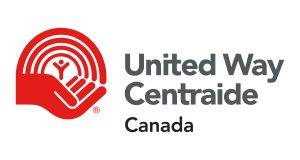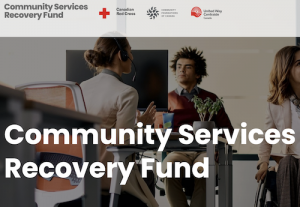 Anita Khanna is the National Director of Public Policy and Government Relations at United Way Centraide Canada, which is a federated network of United Ways and Centraides governed by volunteer boards of directors and working in 5,000 communities in Canada. Over the next three years, Khanna is helping to lead a team to develop a Labour Force Strategy for community-based, human-services organizations in the care economy in Canada. Khanna spoke with PANL Perspectives about the new initiative.
Anita Khanna is the National Director of Public Policy and Government Relations at United Way Centraide Canada, which is a federated network of United Ways and Centraides governed by volunteer boards of directors and working in 5,000 communities in Canada. Over the next three years, Khanna is helping to lead a team to develop a Labour Force Strategy for community-based, human-services organizations in the care economy in Canada. Khanna spoke with PANL Perspectives about the new initiative.
Question: How did the plan for a Labour Force Strategy start?
 Anita Khanna: This issue got on the radar of United Way Centraide Canada in 2021, when we spoke to our community impact leaders network, who lead local investment and partnership work. They’re very connected to community organizations across the country. We asked them about issues in the sector, and we heard a lot about staff recruitment and retention challenges, including high levels of burn out among front line staff in the community services sector and labour shortages, with some workers leaving for other sectors with better pay and benefits. We’ve always had those issues, but the tone we heard — this was during the pandemic — was very stark.
Anita Khanna: This issue got on the radar of United Way Centraide Canada in 2021, when we spoke to our community impact leaders network, who lead local investment and partnership work. They’re very connected to community organizations across the country. We asked them about issues in the sector, and we heard a lot about staff recruitment and retention challenges, including high levels of burn out among front line staff in the community services sector and labour shortages, with some workers leaving for other sectors with better pay and benefits. We’ve always had those issues, but the tone we heard — this was during the pandemic — was very stark.
 Organizations in this country often get project-based funding, which means that wages end up being low, relative to the high education levels required and the high occupational risks that staff typically face. Also, staff members often work from contract to contract, often with no or minimal benefits and with various levels of precarity.
Organizations in this country often get project-based funding, which means that wages end up being low, relative to the high education levels required and the high occupational risks that staff typically face. Also, staff members often work from contract to contract, often with no or minimal benefits and with various levels of precarity.
We also spoke to our Coalition of National Service Organizations about solutions. Together, we’d advocated for the Community Services Recovery Fund, a $400 million investment in our sector, the first of its kind in Canada, so they knew a lot about policy, advocacy and sector issues.
After all this feedback, it became evident that a Labour Force Strategy would help.
Q: What exactly is a labour force strategy?

“Our Labour Force Strategy isn’t for only United Ways and Centraides. It’s for the entire community-services sector. We’re second only to the government in terms of funding of community and human services in Canada. We’ve been advocating for a labour force strategy at the national level, with the federal government, since 2022. Imagine Canada has also advocated for a strategy.” –Anita Khanna
Khanna: It’s a broad range of tools focused on workers in a certain sector, spanning everything from a review of compensation to a review of patterns of education within the sector. It also includes looking at pathways into a particular career or sector, including demand for the services provided today and projected tomorrow. So, it looks at the demographics of people who enter the field and at working conditions, pay scales, hours of work, and all the rest.
The nonprofit sector is unique, because it’s funded by all levels of government, as well as by foundations, philanthropy, and individual donations. It’s highly relied upon by all levels of government to meet their own priorities, such as delivering childcare, decreasing homelessness, welcoming newcomers and refugees, and recovering from emergencies, such as climate disasters or the pandemic. The sector is heavily relied upon but often overlooked.
Social services would not exist in communities across Canada without our sector, and our sector can’t do its work without people — and these workers aren’t going to be automated away. Their work is often high-touch, skilled work.
Q: What will be the scope of the Strategy, and who could use it?

The Labour Force Strategy will increase awareness of the nonprofit sector’s impact, identify challenges and levers of change, develop, and prioritize policy and program solutions, and call on governments, educational institutions, community service organizations, funders and philanthropic organizations to implement the strategy.
Khanna: Our project is focused on paid workers in the care economy within the community services sector, such as early childhood educators, caretakers of seniors or those with disabilities, people in the housing and homelessness sector, those offering services in immigration and settlement, mental-health workers, people helping those facing gender-based violence, and various other jobs in community services.
We’re taking an ecosystems approach to developing solutions in the sector; we know we need all hands on deck when it comes to improving the quality of working conditions and achieving decent work in the sector. Solutions will call on government at the federal, provincial and territorial levels, as well as foundations and the organizations who fund or employ these workers.
With $1.5 million in funding from the McConnell Foundation, we’re able to convene a diverse coalition of sector leaders, partners and funders to lead the work. We’ll develop a clear government-relations and communications agenda that aims to raise awareness about the state of the sector and identify roles for changemakers to improve compensation, working conditions and other levers for change.
Q: Given that the sector has known for a long time that pay scales are low and benefits are slim, is a Labour Force Strategy needed?
 Khanna: The Labour Force Strategy is about finding solutions and calling for action from all levels of government, philanthropic organizations, other funders and the sector itself to identify the role they can play in implementation. Some work has been done on this before, but our labour force strategy is new and adapts and builds on that past work.
Khanna: The Labour Force Strategy is about finding solutions and calling for action from all levels of government, philanthropic organizations, other funders and the sector itself to identify the role they can play in implementation. Some work has been done on this before, but our labour force strategy is new and adapts and builds on that past work.
And it’s led by the community services sector itself. We’ll use the catalytic investment from the McConnell Foundation to ensure we understand current conditions and identify, explore and test a variety of policy and program solutions that will address the challenges being faced now.
This will include addressing concerns with funding of the sector, because how the sector is funded by government and by philanthropic organizations, like foundations and United Ways, are directly tied to how workers are compensated and what benefits can be offered. We want the project to address labour force issues primarily at the systemic level and not solely by placing the burden for change with organizations and individuals. This work will change outcomes for workers in the community services sector for the long term and if done well, will strengthen and sustain the programs and services that can be accessed by individuals in communities across Canada.
We need more workers in the sector, and we need current workers to be compensated fairly and experience improved working conditions. To achieve that, something new must happen.
This is about everyone who’s involved in funding and supporting the sector taking action to solve a wicked problem that’s been occurring for some time.
Anita Khanna is on LinkedIn. Photos are courtesy of UWCC.
Sign up for MPNL’s free newsletter, PANL Perspectives.
Thursday, June 13, 2024 in For homepage, News & Events, Public Policy & Advocacy
Share: Twitter, Facebook



